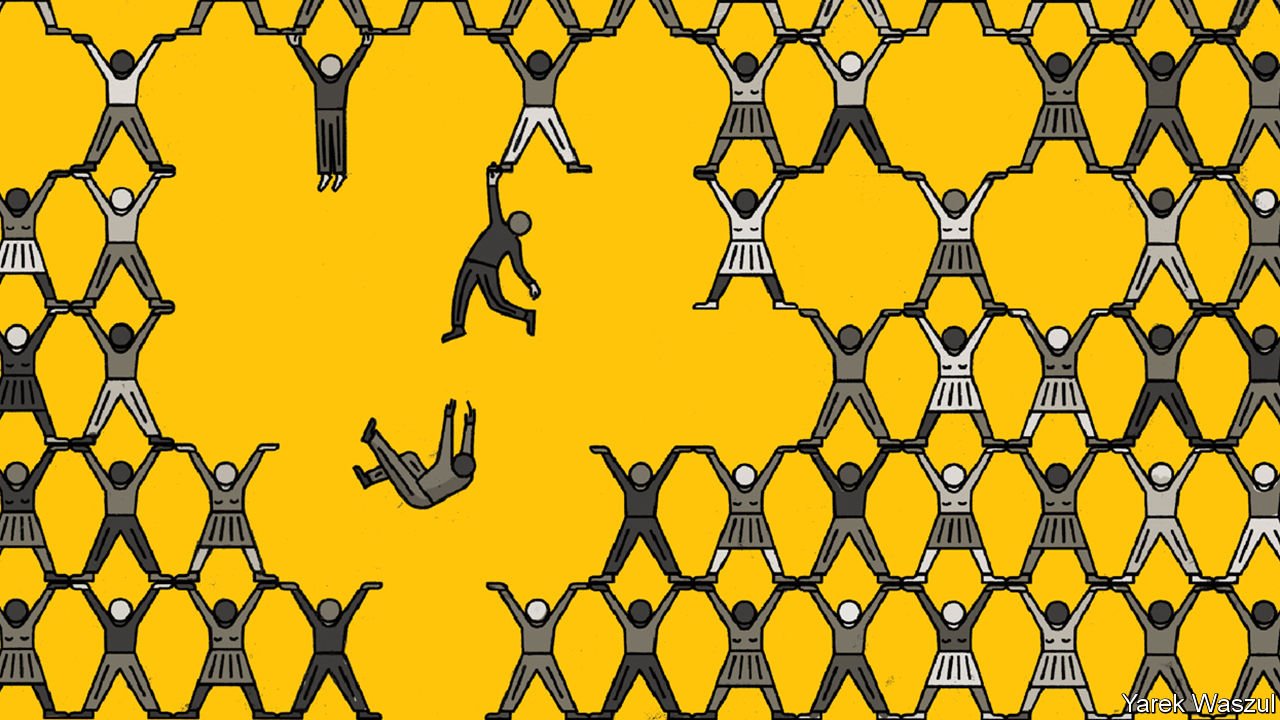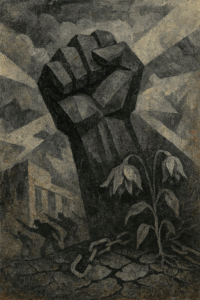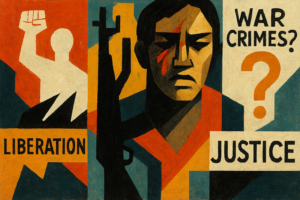
This post has already been read 23 times!
Rashed Al Mahmud Titumir, Rawnak Jahan, Antara Chowdhury, Rubia Siddiqua and Guljar Hossain
I
In most cases, responses to pandemics or economic crises for right reasons have catered to emergencies but they have not transcended to transformational pathways of medium and long terms in developing countries, leaving particularly the needs of the vulnerable with adverse differential outcomes of catastrophes unaddressed. In such a discrepant milieu, COVID-19 upheavals warrant a sustainable solution since the calamity has put economies into recession, a breakdown of labour market and consumer spending. The novel coronavirus fallout is predicted to be more distressing than those of the 2008 financial crisis and the Great Depression. For instance, the International Labour Organisation estimates an overall loss in labour income between $860 billion and $3,440 billion, a rise in unemployment between 5.3 and 24.7 million from 188 million in 2019 and 20.1 million to 35.0 million more people in working poverty.
In Bangladesh, like any other developing countries, daily wagers such as house helps, rickshaw pullers, roadside vendors and transport workers having no savings are bearing the brunt because of their reliance on cash flow that has now been cut off because of the shutdown.
A staggering 85 per cent of the labour force is employed in the informal sector, says the recent 2017 Labour Force Survey of the Bangladesh Bureau of Statistics. Around 60 million are employed as wage labourers, of which 51.7 million are working devoid of job security in this unorganised sector. The informal agricultural sector employs more than 23,048,000 workers while the manufacturing and sservice sectors employ 11,168,000 and 17,000,000 respectively. Thus, most of the labourers remain excluded from the legislation of minimum wages and benefits. This fragment of the labour force is neither employed in the apparel industry nor any other export-oriented industry who will be paid for from the government announced Tk 50,000 million package.
Any pandemic inevitably affects women disproportionately because they are perceived as natural caregivers and home-makers. In case of a long-stretched pandemic, one member of every working couple will be forced to stay at home. On most occasions, the female member will be expected to leave her job, resulting in a gender gap. The impact of epidemics such as ebola, SARS, swine flu and bird flu demonstrates that a larger share of the burden have been borne by women in post-epidemic periods.
Against such backdrop, there is no alternative to instituting a fully-fledged comprehensive life-cycle-based national social security system, particularly in that the existing social safety net programmes are inadequate, ineffective and not universal, sometimes entirely seasonal or are devised on an ad hoc basis after disaster with a low coverage.
Here a preliminary estimation to install a national social security system is presented as a proposal for the next national budget for the 2020–2021 financial year, which begins after three months. This is a baseline, not a comprehensive one, for initiating an informed debate. A set of seven measures — universal pension allowance, jobseeker’s allowance, disability living allowance, child benefit allowance, housing benefit allowance, income support allowance and health allowance — are proposed. More instruments can also be included.
II
EVEN before the pandemic, Bangladesh has experienced various challenges. For example, the Household Income Expenditure Survey data reveal that 38 million people are now living below the poverty line. The rate of poverty reduction has slowed down for a couple of years. In 2000–2010, the rate of decline was about 1.8 percentage point, which dropped to 1.2 percentage point in 2010–2016. Moreover, the international poverty line of $1.9 finds the poverty rate at 14.58 per cent whereas middle-income poverty line, measured at $3.2 per capita per day, and upper-middle income poverty line, measured at $5.5, respectively stand at 52.9 per cent and 84.5 per cent. Furthermore, a pre-COVID-19 estimate by the World Bank suggests that the vulnerable population at risk of falling into poverty increased to 55 per cent of the total population. The coronavirus pandemic can have lethal consequences on the existing slowed-down rate of poverty reduction and vulnerability of people further sliding down to poverty. For instance, people who graduated out of poverty might fall back in again. The situation, particularly in rural areas, may worsen if migrant workers are forcibly returned.
The economic growth in the country has not matched the creation of employment. The unemployment rate in 2016–2017 was 4.2 per cent and among the youth was 12.3 per cent. The situation is aggravating with a 15.2 per cent long-term rate of unemployment. The rate of youth unemployment, composed of the population aged between 14 and 24 years is high at 12.3. The ILO-World Bank estimate of not-in-employment, education and training amongst youth stands at 26.2, far poorer than neighbouring countries.
Also, youths from Bangladesh are not skilled enough and are less productive compared with youths in other countries. The ILO, through ISCO classification, categorises skills-sets into four levels. Level 1 composed of the elementary occupations is considered to be a low skilled level while Level 2 is composed of medium-skilled occupations, composed of skilled agricultural labourers, clerical and service related occupations. Level 3 and 4 are deemed high, which include managerial and professional jobs. Bangladesh has very low percentage in skills levels 3 and 4. Insofar the deficits in skills have been catered for by employing foreign workers. This has led to a significant outflow and a substantial tax was also lost as most overseas workers are undocumented.
The development of early childhood and prenatal stage depends on the mental and physical health of a mother. In Bangladesh, a mother faces multidimensional disparities, often leaving negative consequences on the well-being of children. For instance, a third of the total teenage girls, aged 15–19, become mothers or pregnant, resulting in a 20 per cent stunt babies among the newborns. About 39.8 per cent of women of reproductive age suffer from anaemia and 50 per cent of women have chronic energy deficiency. Also, female-headed household income is 55 per cent of the average income household. The literacy rate of males is 73 per cent and of female 68.9 per cent, significantly low. A prospective mother, if malnourished and deprived, gives birth to a malnourished or stunted child and this results into a higher number of malnourished, unskilled labour force joining the job market.
Forty-six per cent of school-going children are malnourished and underweight and they fail to acquire sufficient knowledge, skills and mental abilities. A dropout rate of 18 per cent from primary education complicates it further. Also, primary and secondary school enrolments are higher for non-poor than poor children, leaving a vast prospective labour force away from basic education and skills. Besides, factors that ensure quality education, such as learning materials, training equipment, laboratory facilities are inadequate, causing quality education to be expensive and only affordable for financially solvents.
Moreover, Bangladesh will have to cater to 12 million aged in 2021, who often suffer from deteriorating health conditions, lack of safe shelters, fear of isolation, depression, etc. Of them, 25 per cent experience some kind of mental health conditions.
Inequality is increasing at an accelerating pace because of higher return on capital vis-à-vis labour. The Gini coefficient, which is not perfect though yet generally used as a measure of equality, stood at 0.482 in 2016, up from 0.458 in 2010, a worrying trajectory.
The above examples of a few existing pre-conditions warrant a movement towards a fully-fledged social security system in view of the limitations of the current social safety net programmes. For instance, the maternal allowance programme for poor lactating mothers covers only 10 per cent. For the school-age children, stipends along with the school meals are not enough. Other programmes such as allowance for the widowed and destitute, employment generation programme for the poorest, old-age allowance, vulnerable group development, food for work, rural employment and road maintenance programme, social development, one-house-one-farm, etc are designed to target only the poorest. In 2018–19, around four million people received the old-age allowances of the total 12 million aged. Besides, the amount does not help them to maintain a living standard above the poverty line. Many of these facilities are offered for specific seasons. The weaknesses of the urban-centred social security programmes are well known and are dreadfully in need of interventions. These schemes fail to provide a long-term solution for the poor.
The existing social protection and social safety nets do not work effectively. Those who are selected for the schemes, in many cases, are chosen politically, leaving the deserving unserved, with plenty cases of leakage and mishandling. Moreover, the aggregate figures shown in the budgets are misleading. For example, the total earmarked in the 2019–20 financial year is Tk 743.64 billion, of which pension for the retired government employees of 0.63 million is Tk 230.1 billion, a significant share.
There are specific differences amongst social security, social safety net and social protection. Social security indicates a government system that provides monetary assistance for people with inadequate or no income whereas the social protection system protects the most vulnerable from shocks and stresses. Safety net programmes means transfers of food, cash, vouchers, or goods to the vulnerable groups.
Introducing a universal social security will not only overcome inadequacies of social safety nets but will also help to flourish the economy. For instance, if a child benefit allowance is given at an early childhood stage, this will ensure healthy mothers and infants and will reduce mortality. It will lower the fertility rate and more resources can be spent on each child. As a result, a skilled population will join the market. It is assumed that a skilled labourer gets a decent job, gains the ability to pay more taxes and increases higher public finance flowing into the economy. Introducing job seeker’s and income support allowances will allow youth to get proper trainings, skills, and lead lives above the poverty line. A universal old-age allowance will ensure that individuals not falling back in poverty again after retirement. It will increase consumption and foster growth.
III
AN ESTIMATION of projected cost to implement seven social security allowances are presented here. These are estimates of minimum level as beginning of a virtuous cycle for the country.
Universal pension allowance: In a number of developing countries, universal pensions have been introduced. All people aged above 60 years are eligible for the scheme and they will receive a minimum amount to keep out of poverty. The unit for universal pension is determined according to the international poverty line, currently around Tk 161.5 ($1.9) per day. The elderly population of Bangladesh in 2021 is estimated to be 12.473 million according to the BBS Population Projection. Tk 725,005.8 million is required with allowance of Tk 4,845 per month.
Jobseeker’s allowance: This is an unemployment benefit to be paid to a person who is actively seeking employment over 22 years old and under the retirement age and work 16 hours or less every week. The projected job seeking population in 2021 is assumed to be 7.53 million in accordance with the BBS. An allowance of Tk 2,550 for this group of people is considered so that they do not become dependent.
Disability living allowance: This is for the people, requiring additional facilities or assistance for mobility. The beneficiaries should be registered PWDs (people with disabilities) in accordance with stipulated definition in the Persons with Disabilities Welfare and Protection Act 2013, with the minimum age of six and annual income of less than $439. The underprivileged population with disabilities in 2021 is assumed to be 1.658 million and a cash benefit equivalent to the international poverty line is proposed.
Child benefit: This is the fairest, most efficient and cost-effective way of recognising the additional costs and responsibilities borne by parents. The children aged 0–14 of lower income group are considered to be eligible for this allowance. The projected child population in 2021 is 45.8 million, according to BBS. Among them 9.99 million children are from eligible group of this allowance. The estimated allowance is 850 per month per person.
Housing benefit: Housing benefit is intended to provide financial help for rented accommodation for persons with no income or very low income. The cost of living is increasing day by day and is a serious problem for job seekers and the elderly. To afford a one-bedroom apartment a person needs Tk 9,299. The country is not capable of bearing the full rent. A phased approach is proposed. A total projected beneficiary of this housing benefit is 20.003 million, derived by adding the elderly and the job seekers. The estimated housing benefit is 111617 million.
Income support allowance: This is to support the population that earns less than the required to maintain a basic living. The allowance is for the 15–59 age group, living below the extreme poverty line. The estimated population in 2021 will be 24.3 million. The income allowance is Tk 1,147.5 per month. This amount is chosen to help minimise the gap between their earnings and needs without alluring them to be dependent on such allowance. A total of Tk 334,611 million will be needed.
Health allowance: The ideal solution is to go for a national health services for all. All the while this is institutionalised, as a stop-gap measure, health allowance should be provided for those who cannot afford. In a developing country like Bangladesh a health allowance is more effective than health insurance for the people living below the poverty line. From HIES 2016, Tk 765 is found to be their monthly health expense. If such amount can be provided for 37.3 million people who live below the upper poverty line, it will lessen vulnerability and eventually reduce poverty at a faster pace. A total of Tk 342,414 million will be needed for the health allowance, which is 5.7 per cent of the estimated budget.
An annual budget of Tk 6,000,000 million is assumed for the 2020–2021 financial year in view of the year-on-year rate of growth. The budget of the previous fiscal year was Tk 523,1900 million. Given the post-pandemic response requirements, the size of the budget would be increased further this year. The estimated real GDP in 2021 is Tk 27,631,800 million since the current real GDP is Tk 25,704,000 million, assuming a growth rate of 7.5 per cent.
The total estimated amount for the seven allowances is Tk 194,235.98 million which is 32.37 per cent of the total budget and 7.03 per cent of the GDP. The government has allocated Tk 74,367 crore in the current budget, which is 14.21 per cent of the total budget and 2.58 per cent of the GDP. The estimated budget for the allowance is an additional amount of Tk 119,868.98 crore.
This may sound an ambitious proposition for Bangladesh as budget deficit is considered a major impediment to a comprehensive social security system. An exercise for finding the money is not a difficult, given many loopholes in the system. A rigorous exercise to curb spending on items that do not point out any multiplier effects can help find money.
IV
THE measures suggested are in line with Bangladesh’s national aspirational goals of achieving the status of a middle income and a developed country and in accordance with the international commitment of realising the Sustainable Development Goals.
A number of countries, both in developed and developing world, have established social security schemes. The evidences indicate that these have played an important role for prosperity and progress. The institutional mechanisms of these countries can be contextualised to enact laws, create organisations, devise policies, and design operational system for social security schemes. Such exercises are not a far-fetched task.
Every crisis and disaster pave the way for new thinking. The current crisis opens the door to out-of-box possibilities and tapping such potentials is contingent on visionary politics.
This is a co-production involving final-semester students of master of development studies of the University of Dhaka. Rashed Al Mahmud Titumir is a professor of economics of the development studies department.
First Published in New Age April 16, 2020
Source of Thumbnail Image: The Economist
This post has already been read 23 times!





